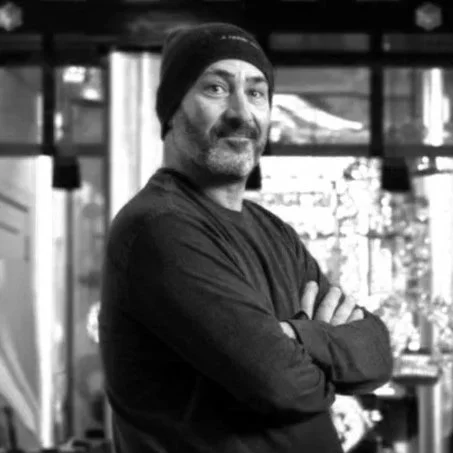
Oakland Faith
Oakland Faith
Over the past few decades, urban environments have seen a significant transformation in the way faith is perceived and practiced. With globalization and technology, traditional religious structures have had to adapt to new cultural and social norms. However, with the rise of secularism and the rejection of religion, communities have struggled to maintain their moral foundation.
This long-term visual study is currently comprised of two chapters.
Current Events
-
'House of Worship' at Oakland City Hall
Nov. 16th 2025 to Jan. 18th 2026
Opening Dec. 10th 4:00-5:30 PM
-
'People of Faith' at Saint Paul's Episcopal
Nov. 16th 2025 to Jan. 18th 2026
Opening Nov. 22nd 4:00-5:30 PM
A project by Nicolò Sertorio, with contributions by Prof. James T. Campbell and Prof. Gretchen Buggeln
The project "Houses of Worship" explores visually the coalescence of faiths and cultures within the diverse landscape of Oakland. The worship places depicted here range from big to small, rich to poor, ornate to plain. The spiritual traditions they represent range from orthodox to decidedly unorthodox. But whatever their style or tradition, all express the beliefs and aspirations of specific people living in a particular time and place. At the same time, all express a continuing, shared human search for meaning.
A project by Nicolò Sertorio & J Michael Tucker
Meet the TEAM
-
Nicolò Sertorio is an Oakland-based artist who works primarily in photography. His practice is focused on the nature of co-existence, global and individual responsibility, while creating conversations around our best path forward. His projects engage socio-anthropological ideas by examining social behavior and environmental impact through image-making. His art spotlights the hidden costs of contemporary life, including economic disparity, environmental issues, and loss of identity. His multicultural background informs his pluralist sensibility and approach: he was born in Princeton, New Jersey (USA), raised in a multicultural family of artists, scientists and academics in Italy, and has also lived in Switzerland, Ireland, Belgium, India, and Germany. Nicolò has developed from an early age an affinity for the ‘other’.
Sertorio's work has been the subject of solo exhibitions at galleries and institutions worldwide, including Diocletian's Palace, in Split, Croatia, the University of the Arts in Philadelphia, Pennsylvania and the FORMAT festival in Derby, United Kingdom. In addition, his photographic series Once We Were Here was recently featured in Scott Nichols Gallery's booth at The Photography Show, presented by AIPAD.
Still recognizing the value of multicultural experience, Sertorio has created work during numerous international residencies, including the Tao Hua Tan Artist Residency in Xuancheng, Anhui, China and Kala Art Institute residency in West Berkeley, California. He is also an engaged community member in Oakland who has served as the president of the Northern California chapter of the American Society of Media Photographers (ASMP), and sits on the industry advisory board at the City College of San Francisco, sharing decades of commercial photography experience.
Sertorio is an award-winning photographer, recognized six times by American Photography. He is also a three-time finalist of Critical Mass and won First Prize from the PDN Photo Annual. His visual stories have been featured in numerous magazines and online periodicals, including Wired Magazine, LensCulture, AD, Domus, Elle, Getty, Marie Claire, and Black Enterprise, and he has created public, corporate, and privately commissioned artwork. Sertorio also currently teaches at CCSF and his work is represented by Scott Nichols gallery.
-
James T. Campbell is the Edgar E. Robinson Professor of History at Stanford University, where he teaches courses in American and African American history. He is the author of Songs of Zion: The African Methodist Episcopal Church in the United States and South Africa (1995) and Middle Passages: African American Journeys to Africa, 1787-2005 (2006), which was a finalist for the Pulitzer Prize in History. Co-edited books include Race, Nation, and Empire in American History (with Matthew Guterl and Robert Lee, 2007); The Black Photo Album (with Santu Mofokeng, 2013); Slavery and the University: Histories and Legacies (with Leslie Harris and Alfred Brophy, 2019); and Mississippi Witness: the Photographs of Florence Mars (with Elaine Owen, 2019). He is currently completing a book on historical memory and the Mississippi Freedom Movement. A committed public historian, Campbell has served as a consultant for numerous documentary films, curricular projects, and museum exhibitions, including the “Power of Place” exhibit at the Smithsonian Institution’s National Museum of African American History and Culture.
-
Gretchen T. Buggeln holds the Phyllis and Richard Duesenberg Chair in Christianity and the Arts at Valparaiso University. Her work addresses topics and questions in religious architecture, religion and museums, the material culture of religion, and historic preservation. In Temples of Grace: The Material Transformation of Connecticut’s Churches, 1790-1840 (2003) and The Suburban Church: Modernism and Community in Postwar America (2015), she considers American religious architecture in periods of dynamic growth and change. Co-edited works include Museums and Religion: Global and Interdisciplinary Perspectives (with Crispin Paine and S. Brent Plate, 2017) and Interpreting Religion at Museums and Historic Sites (with Barbara Franco, 2018). A past president of the Vernacular Architecture Forum, Buggeln is currently completing a book that describes a vernacular, multidisciplinary approach to the study of religious architecture in America. She firmly believes that studying the religious buildings and landscapes of specific places gives an incomparable window into the unique, localized character of human history and community.
-
As a child I was always fascinated with the God my friends prayed to as opposed the one that I knew was the right one, mine! I grew up Jewish, and more frequently went to mass with my Catholic friends than I ever attended synagogue. At the age of 13, I had my Bar Mitzvah and from then on, knew religion was not for me. I knew that there was something spiritual within me, but the idea of being driven into a religion based on other’s beliefs turned me off.
Faith and tradition play an important role in my life; I believe one must reflect on both to find the path that best suits them. The way in which faith and tradition have defined and often dictated the way people run their lives or want to run their lives is an integral part of why I’m photographing spiritual leaders. I’m fascinated how one can believe in and accept so strongly a faith that has been jettisoned onto them. I believe one should be who or what they want, and I love that we are all different.
In present day Oakland, I see a drastic change in our society; one that feels desperate, lawless, and disillusioned. Whether this is due to the pandemic, poverty, racism, or world affairs, I’ve listened to our spiritual leaders discuss how this plays out in their houses of worship. Can these leaders of our City make a difference? Do they hold on to tradition or venture out into modern times? Can spiritual leaders do enough to help these seemingly dire circumstances?
These are just some of the many questions I hope to answer for myself on this journey.
LET’s STAY CONNECTED
Sign up for our newsletter for the
latest news and events.








